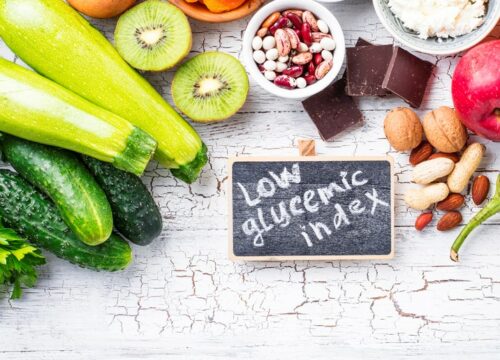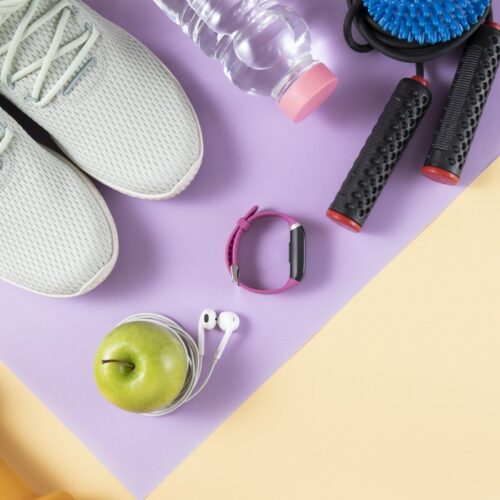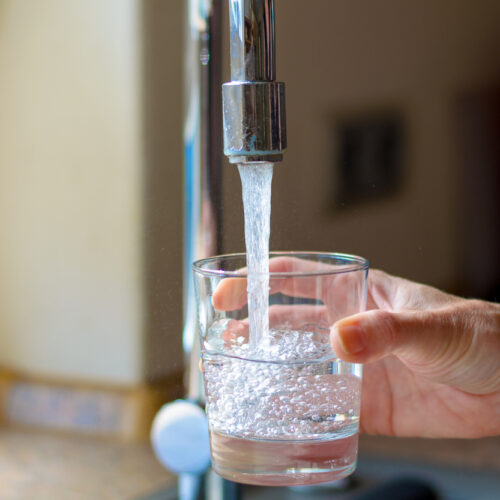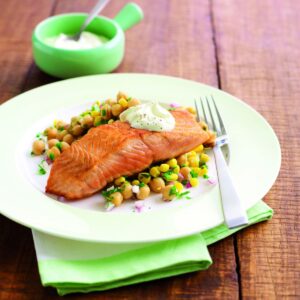
Nutritionists Cindy Williams and Rose Carr explain how the Glycaemic Index works and some of the traps to be avoided.
The Glycaemic Index (GI) can be a useful tool in your armoury of healthy eating and including more low-GI carbohydrates in your diet can be beneficial to your health. But the GI needs to be kept in perspective: it should not be used in isolation and we can’t use it to justify eating more chocolate!
What is the Glycaemic Index?
The Glycaemic Index measures how carbohydrate foods act when they are digested. It’s a bit like the story of the hare and the tortoise. They are having a race and the hare races ahead but burns out, exhausted, along the way. Meanwhile, the tortoise moves slowly but steadily along and ends up winning the race.
Foods with a high GI are like the hare: the carbohydrate quickly breaks down to glucose and is absorbed into the bloodstream. This sends your blood glucose (sometimes called blood sugar) zooming up and makes your pancreas work harder, producing more insulin to get it back down to normal. On the other hand, low-GI foods act like the tortoise. They are slowly digested so the glucose trickles into your bloodstream at a slower rate, allowing a more gradual rise in blood glucose, which keeps you feeling fuller for longer.
There can be times when we need a quick burst of energy, but for long-term health and a steady supply of energy all day long, we are better to follow the example of the tortoise: slow and steady wins the race. That means, when it comes to eating carbohydrate foods, it is sensible to choose ones with a low glycaemic index more often.
Glycaemic Index range
- Low GI = 55 or less
- Medium GI = 56-69
- High GI = 70 or more
The most useful way to use the GI is to think in terms of substituting high-GI carbohydrates with low-GI carbohydrates. GI is less useful when foods contain a small percentage of carbohydrate and more protein and/or fats, for example peanuts have only 8 per cent carbohydrate.
The GI value is not fixed. GI values indicate the average glycaemic response to a food when measured in scientific studies: your response could be very different. The GI of fruit and vegetables varies between varieties, countries and how they are prepared.
Bread is an example of a food with a wide range of GI values. White and wholemeal bread typically have a high GI, whereas wholegrain bread is low-GI. With so many different varieties on the market, and if its GI value is not stated on the label, how do you know whether your bread is low-GI bread? Professor Jim Mann recommends a simple procedure that he calls ‘the flap test’. Pick up a thick slice of bread and shake it. If it ‘flaps’ then it is probably high-GI as true whole grain (and hence low-GI) bread should be too dense to flap.
Some low-GI foods (average GI value)
- Barley – 30
- Chickpeas – 37
- Kidney beans – 36
- Lentils, boiled – 16
- Lentils, brown, canned– 42
- Yellow yams – 51
- Low-fat milk – 31
- Apples – 38
- Pears – 24 to 33
- Sweet corn – 48
- Plums – 24 to 53
- All bran – 42
- Grapes – 54
- Golden kiwifruit – 47
- Carrots – 32
- Baked beans – 48
To find out the GI of a particular food, go to www.glycemicindex.com and click on ‘GI Database’.
Low-GI impact on health
Choosing low-GI carbohydrates may help if you identify with any of the following:
- I want to lose weight
- I often feel hungry and can’t help snacking on treat foods
- I’m always tired
- I have diabetes and need to improve my blood sugar and fat levels
- I am at risk of heart disease
- I am at risk of diabetes
- I have high cholesterol
- I exercise a lot
Regularly choosing low-GI instead of high-GI carbohydrates can help reduce your risk of developing obesity, heart disease and type 2 diabetes.
GI and weight-loss
Every spring, many of us set out to trim off a few fatty centimetres before squeezing into that swimsuit and exposing parts of our body that have been comfortably covered all winter. We cut back on chockies, bikkies, chippies and drinkies (the alcoholic kind)! We try to exercise more and eat less. We lose a little weight, but for some of us it’s not enough to make those hunger pangs worth it and we lapse back into bad habits. This is where the GI can help. By simply swapping some of the high-GI carbohydrates for low-GI alternatives, we can get through our busy days with more energy, less hunger pangs and still lose weight.
A study from the University of Sydney published a few months ago looked at different types of healthy diets with either high- or low-GI foods to see which was best for weight loss and heart health. They found that the people on the high-carbohydrate, low-GI diet (plenty of grainy bread, pasta and rolled oats) lost the most fat and lowered their LDL (bad) cholesterol the most.
No carbs? No way!
I was recently trying on clothes with a group of women as we discussed how to fit into our newly bought, slightly tight summer clothes! “I’ll just eat lots of tuna and salad, and cut out bread and
pasta,” one of the girls announced. She was on the right track by eating tuna and salad but she would feel as though she was on a deprivation diet if she completely cut out energy-giving carbohydrates. The key is to eat less overall and to include low-GI carbohydrates.
GI myths
Watermelon has a high GI so I shouldn’t eat it
Right? Wrong! Watermelon was once thought to be high GI, but recent research has shown it to have an average GI of 50. It also doesn’t have much carbohydrate because it’s mainly made up of water.
When considering a low- or high-GI food, we need to consider how much carbohydrate a food contains. Bread, rice, pasta and cereals are mainly carbohydrate, so choosing low-GI varieties makes a difference. The Glycaemic Index does not matter for foods with very little or no carbohydrate, eg, protein-rich foods, such as meat, fish, chicken, avocado and eggs, or fat-rich foods such as avocado and nuts.
All fruit and vegetables are beneficial for health because they are packed full of antioxidants and nutrients including vitamins, minerals and fibre.
Chocolate has a low GI, which means it is okay to eat lots
Sound too good to be true! And it is. Solid chocolate is over half sugar and about a third fat. This makes it a sublime indulgence that glides over our taste buds, begging us to eat more, but it won’t help you lose weight. The generous amount of fat in chocolate reduces its GI by slowing down the digestive process. It sits in the stomach and small intestine for longer, so all that sugar is more slowly absorbed than if we had eaten it straight. For the same reason (that is, they have lots of fat), potato chips have a lower GI than baked potatoes, but we all know they’re not healthier.
High-GI foods are bad for me
Not all the food you choose needs to be low GI. That would go against the number one healthy eating guideline: eat a wide variety of foods.
People with diabetes need a high-GI, fast-acting carbohydrate if their blood glucose levels drop below 4mmol/L. This is called hypoglycaemia. Pure glucose in the form of jelly beans, a gel or powder has a GI of 100, so is quickly absorbed into the bloodstream to bring glucose levels back to normal. If blood glucose levels have risen above 4mmol/L, it is advised to eat a low-GI food such as a slice of grainy bread or a small tub of low-fat plain yoghurt.
High-GI foods also help athletes recover from a hard training session by quickly refilling depleted carbohydrate stores. For optimum recovery, sports dietitians recommend athletes combine high-GI foods with protein.
Glycaemic load
Although a food may have a low GI, it’s also important to consider how much carbohydrate it has. Glycaemic load considers the amount of carbohydrate in a food as well as its GI. Both of these together determine the blood glucose response.
To work out glycaemic load (GL), multiply the GI x the grams of carbohydrate, then divide by 100. For example:
- 1 apple (GI of 38 x 13 grams carb) / 100 = 5
- 1 cup of sweet corn (GI of 48 x 32 grams carb) / 100 = 15.4
The differing amount of carbohydrate affects the glycaemic load and therefore the blood glucose response in your body.
Portion size also affects glycaemic load. For example, one cup of sweet corn has a GL of 15.4 but half a cup only has a GL of 7.7.
What this demonstrates is that using GI in isolation does not give you the full story. You need to consider the amount of carbohydrate in the food you are eating. For this reason, GI is most useful when choosing between foods with a high percentage of carbohydrate and is fairly irrelevant when foods contain a low percentage of carbohydrate. It also highlights that when a food has a low GI it does not mean you can eat huge volumes of it.
Using the GI in everyday life
Here are some tips to integrate low-GI foods into a healthy diet.
- Include one low-GI carbohydrate at each meal: it will make it more filling and lasting.
- Look at the carbohydrates you eat and simply swap some of the high-GI ones for low-GI alternatives; for example eat yam, sweet corn or barley or use a low-GI potato such as Carisma. Add dried beans, split peas, chickpeas, lentils or hummus to meals
- Try potato salad instead of hot potatoes: as cooked potato cools, the carbohydrate structure changes to a more slowly digested form.
- Eat dense wholegrain bread, pumpernickel or authentic sourdough instead of white or wholemeal; dense breads usually have a lower-GI value.
- Eat breakfast dishes based on oats, barley and bran, eg porridge, toasted muesli, oatmeal pancakes.
- Choose long-grain wholegrain rice instead of white rice.
- Add vinaigrette dressing to salads: the acid in lemon juice or vinegar slows down stomach emptying.
- Use reduced-fat milk and yoghurt.
The most important point to remember is that the glycaemic index is most relevant when comparing foods that contain a high percentage of carbohydrate, where substituting a high-GI for low-GI food will have a bigger impact on your body’s blood glucose response.
GI is a great help to healthy eating but shouldn’t be used on its own. It’s like the icing on the cake of an already healthy diet.
10 healthy low-GI snacks
- Brown rice sushi with a protein filling such as tuna or tofu
- Fruit salad with reduced-fat yoghurt
- Apple or berry muffin – but beware cake masquerading as muffin! Try this Light and tasty Weet-Bix muffin recipe for a healthier option
- Baked beans on wholegrain toast
- Avocado and salmon on rye sourdough bread
- Banana or berry smoothie with added oats for a nutty texture
- Small handful of nuts and low-GI dried fruit such as apricots or prunes
- Swiss-style muesli (with whole grains)
- Carrot sticks with hummus dip
- Peanut butter sandwich on wholegrain bread
You can find low-GI swaps and products through the GI Foundation.
Low-GI meal ideas
- Dhal on basmati rice
- Minestrone soup
- Split pea soup
- Chilli con carne – add a can of red kidney beans and chilli to your usual mince mixture and serve on long-grain brown rice.
- Lasagne – add red lentils, canned tomatoes, carrot and silver beet to your usual mince mixture and layer with cottage cheese and lasagne; top with grated cheese and bake.
- Stir-fry beef and vegetables with noodles
Five quick and easy low-GI desserts for summer eating
- Berries and yoghurt: Mix strawberries or raspberries with a tablespoon of castor sugar in a small pan. Stir over a medium heat for about five minutes until the strawberries soften and syrup forms. Serve over reduced-fat Greek yoghurt.
- Fruit crumble: Make a crumble by topping cooked fruit with a crumble mixture of toasted muesli, wheat flakes, a little melted margarine and low-GI honey.
- Banana split: Cut a firm banana in half lengthways and top with two small scoops of low-fat ice cream. Spoon fresh passionfruit pulp over the top and sprinkle with roasted almonds.
- Fruit and dip: Arrange a selection of fresh fruit such as watermelon, pineapple, strawberries, kiwifruit, mango, rockmelon on a platter and serve with a 200g bowl of reduced-fat Greek yoghurt combined with a tablespoon of honey.
- Cinnamon peaches: Top canned peach halves with a combination of shredded coconut, brown sugar and cinnamon. Drizzle with a little juice from the can then bake for 10 minutes.
At Healthy Food Guide, we only collaborate with trusted brands. To bring you this article we have partnered with the GI Foundation, for more information visit gisymbol.com
Did you know?
- Chilli helps reduce insulin levels. A study of 36 people found that when they added freshly chopped chilli to their meals, they needed less insulin to bring glucose levels back to normal.
- Vinegar reduces post-meal sugar cravings. The more vinegar (up to 2-3 tablespoons), the more satisfied people feel. SO be generous with that dressing on the salad!
- Children who ate porridge rather than a high-GI cereal for breakfast did better at puzzles, drawing, geography and some technical skills used in maths and science. More importantly, the six-to-eight-year-olds listened better!
www.healthyfood.com











